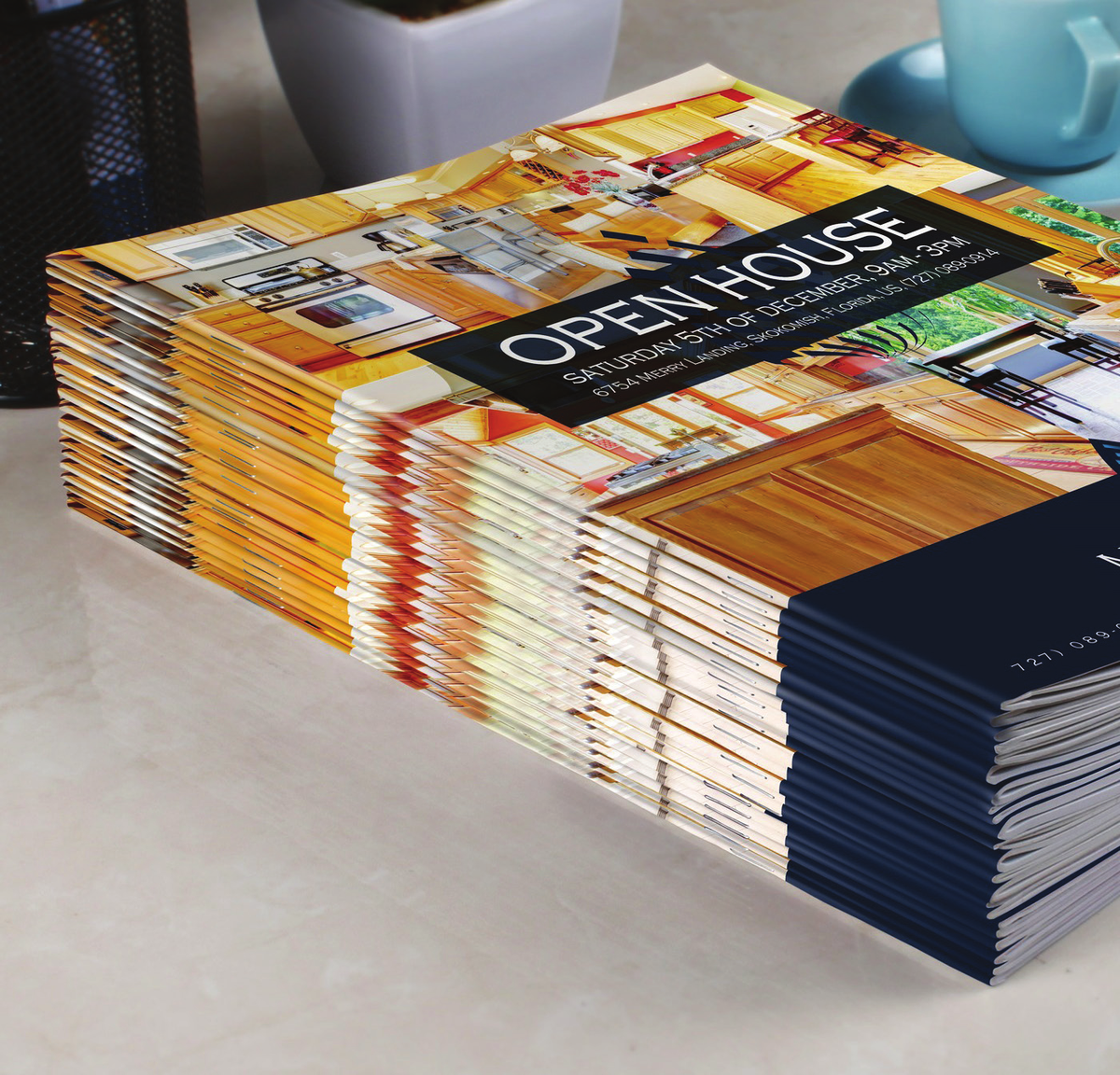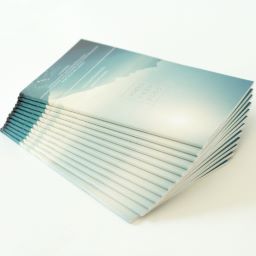How to Combine Print and Digital for Next-Level Booklet Printing
How to Combine Print and Digital for Next-Level Booklet Printing
Blog Article
The Vital Overview to Understanding Pamphlet Printing Options and Techniques
The process of booklet printing involves multiple factors to consider that can greatly influence the last item. From selecting the appropriate format and size to recognizing the nuances of binding methods, each selection plays an essential duty. In addition, factors such as paper stock and printing strategies additional influence the performance of the brochure. As one browses these choices, it becomes important to grasp just how they adjoin and what that suggests for the general end result.
Recognizing Booklet Dimensions and formats
When taking into consideration booklet printing, recognizing the various layouts and sizes readily available is vital for attaining the wanted presentation. Brochures can be generated in numerous styles, including saddle-stitched, spiral-bound, and perfect-bound, each offering unique advantages. Usual dimensions range from common letter (8.5 x 11 inches) to smaller choices like A5 (5.8 x 8.3 inches), permitting adaptability based on web content and target audience.Selecting the appropriate dimension can affect both the layout and viewers engagement. Bigger dimensions might fit aesthetically driven material, while smaller sized formats may be a lot more portable and straightforward. In addition, the number of pages influences the choice of binding technique, as thicker pamphlets might require stronger bindings. Inevitably, understanding these elements enables for an extra customized method, making certain that the final product lines up with the designated message and visual, improving the total efficiency of the interaction.
Selecting the Right Paper Supply

Binding Methods: Alternatives and Considerations
When it comes to binding methods for booklets, a number of alternatives are readily available, each with distinct advantages. Saddle stitch binding uses a cost-efficient service for thinner brochures, while perfect binding techniques give a more sleek look for thicker publications. Wire-O binding stands out for its resilience and convenience of use, making it suitable for records that require flexibility.
Saddle Stitch Binding
Saddle stitch binding uses a sensible and affordable solution for assembling pamphlets, making it a prominent selection amongst businesses and authors. This binding method includes folding sheets of paper in fifty percent and stapling them along the fold line, producing a well organized and neat appearance. Typically suitable for pamphlets with a reduced web page matter, saddle stitching is suitable for magazines, brochures, and educational products. The simplicity of this technique permits fast manufacturing and is commonly favored for promotional products or brief runs. Nonetheless, it is important to note that saddle stitch binding may not appropriate for thicker pamphlets, as the spine might not hold up under enhanced weight. On the whole, it stays a trustworthy alternative for many printing projects.
Perfect Binding Strategies
Perfect binding is a widely utilized technique that supplies a sleek and specialist surface to booklets and publications. This technique involves gluing the pages with each other at the spinal column using a strong adhesive, permitting a clean edge and the capability to hold a bigger number of web pages compared to saddle sewing. Perfect binding is especially appropriate for thicker booklets, such as catalogs and annual reports, where a durable, flat spinal column is preferred. In addition, it uses the option for a published cover that can be made to enhance aesthetic charm. Nevertheless, factors to consider such as web page matter, paper weight, and the intended usage of the pamphlet should be taken right into account, as they can affect resilience and total quality.
Wire-O Binding Choices
Wire-O binding, known for its longevity and versatility, provides an excellent alternative for pamphlets that need easy page transforming and a specialist appearance. This binding method uses a series of metal loops that hold pages safely, permitting them to lie level when open. It is specifically appropriate for directories, manuals, and discussions due to its durable nature. Wire-O binding is offered in various shades and sizes, suiting various web page matters and thicknesses. Furthermore, it allows the inclusion of covers and tabs, improving the booklet's general visual. Considerations for Wire-O binding consist of the choice of cable shade, the size of the loopholes, and the extent of customization preferred, every one of which can greatly influence the end product's look and capability.
Digital vs. Offset Printing: Which Is Best for You?
When choosing a printing technique for brochures, comprehending the differences between electronic and balance out printing is essential. Digital printing utilizes modern-day technology to produce high-grade prints promptly and cost effectively, making it excellent for short runs or projects requiring quick turn-around times. It enables modification, offering the capacity to publish on-demand with marginal waste.In contrast, offset printing is a traditional method that masters creating large quantities with constant high quality. It includes moving ink from a plate to a rubber covering, then to the paper, which causes vibrant colors and exact details. Offset printing typically requires longer arrangement times and is a lot more cost-efficient for bigger volumes.Ultimately, the selection between digital and balance out printing depends on task needs, spending plan, and preferred quantity. For tiny, time-sensitive tasks, electronic could be the very best option, while offset may be more effective for larger, top notch manufacturings.

Creating Your Booklet: Tips and Best Practices
When making a pamphlet, cautious focus to format, font selection, and shade use can greatly boost its efficiency. A well-structured layout overviews the visitor's eye, while proper fonts ensure readability and share the preferred tone. Additionally, reliable usage of color can stimulate emotions and emphasize essential details, making the total design a lot more impactful.
Picking the Right Format
Just how can one effectively select the ideal design for a booklet? It is necessary to review the brochure's purpose and target audience. A tidy, organized design boosts readability and interaction. Making use of a grid system can assist in lining up elements consistently, developing an expert appearance. Additionally, incorporating visual power structure through varying sizes and positionings of pictures and text can guide the visitor's eye and highlight key info. It is likewise essential to leave sufficient white room, which avoids overcrowding and allows for better focus. Checking various layouts with mock-ups can give understanding right into exactly how the layout performs in real-world situations, making sure that the final item satisfies both functional and aesthetic demands.
Choosing Appropriate Font Styles
A well-chosen font style can significantly improve the overall design of a pamphlet, complementing the design and enhancing the material's message. The choice of font styles must think about readability, particularly for body message, as it guarantees the details comes to all visitors. Sans-serif fonts are usually news chosen for electronic styles, YOURURL.com while serif font styles can provide a typical feel in printed materials. It's recommended to restrict font selections to 2 or 3 to keep visual coherence. In addition, font size plays a crucial role; headings need to be not overwhelming yet unique, while body message should fit for reading. When picking fonts, alignment with the pamphlet's style and target audience is important for effective communication and visual allure.
Effective Use of Shade
Color works as an effective tool in pamphlet layout, forming understandings and assisting visitor feelings. It can stimulate feelings of count on, excitement, or calmness, depending upon the colors selected. Designers need to think about shade theory concepts, guaranteeing that the picked combination straightens with the pamphlet's message and target market. For instance, making use of warm colors like red and orange can develop necessity, while cooler tones like eco-friendly and blue foster tranquility.Additionally, contrast plays an important role; corresponding colors can boost readability and visual allure. Consistency in shade usage across pages additionally reinforces brand name identification and communication. Inevitably, reliable shade execution not just records interest however likewise strengthens the brochure's function, making it an essential aspect of successful layout.
Finishing Touches: Coatings and Special Results
While several consider the web content and design of a brochure the most vital aspects, the finishing touches, such as coverings and special impacts, play a necessary duty in improving its general appeal. Coatings can provide defense and sturdiness, making sure that the brochure endures wear and tear. Matte coatings use an advanced, non-reflective surface area, while glossy coverings can make colors appear more distinctive and lively. Special results, like embossing or foil marking, add a tactile dimension that can create a memorable impact. These methods can highlight particular locations, drawing attention to crucial information or developing aesthetic passion. Furthermore, UV finish can give a high-shine coating that raises the general look.Together, these ending up touches not just boost the brochure's aesthetic but additionally interact professionalism and trust and attention to information, ultimately leaving an enduring impact on the visitor.
Expense Considerations for Pamphlet Printing
Comprehending the numerous cost factors to consider for pamphlet printing is essential for organizations and organizations aiming to enhance their spending plans. Key elements influencing expenses consist of the selection of binding, paper, and ink methods. Better materials, such as exceptional paper or specialized inks, typically enhance the general expenditure. Furthermore, the dimension and advice web page matter of the booklet play a considerable function; bigger pamphlets need even more sources and time to produce.Another vital factor to consider is the printing technique, whether digital or offset, as each has its very own pricing structure and suitability for different quantities. Businesses ought to also factor in design costs, which can vary based on complexity and the use of professional services. Eventually, shipping and handling fees can add to the total, especially for huge orders. By evaluating these elements, companies can make enlightened choices that straighten with their monetary abilities while achieving the wanted top quality in their published materials.
Often Asked Inquiries
What Are the Ecological Influences of Brochure Printing?
The environmental impacts of brochure printing include deforestation from paper production, carbon exhausts from transport, and waste generation from disposed of materials - Booklet Printing. Sustainable methods, such as utilizing recycled paper and environment-friendly inks, can alleviate these impacts
How Can I Make Certain Color Precision in My Pamphlet?
To assure shade precision in a pamphlet, one must utilize calibrated monitors, employ professional shade profiles, conduct test prints, and pick high-grade printing solutions that offer shade matching and proofing options for ideal outcomes.
What Is the Regular Turnaround Time for Pamphlet Printing?
The normal turnaround time for pamphlet printing varies depending upon the intricacy and quantity - Booklet Printing. Generally, it varies from a few days to 2 weeks, influenced by factors such as publishing techniques and ending up demands
Exist Minimum Order Quantities for Brochure Printing?

Can I Publish Brochures in Numerous Languages?
Publishing booklets in multiple languages is feasible. Many printing services provide choices for multilingual or multilingual formats, permitting efficient interaction. Cautious preparation warranties that make aspects fit different languages without endangering readability or visual appeals. Furthermore, elements such as paper stock and printing methods additional affect the efficiency of the brochure. When taking into consideration booklet printing, recognizing the various formats and sizes available is vital for accomplishing the preferred presentation. When selecting a printing technique for pamphlets, understanding the differences between digital and balance out printing is crucial. Additionally, the size and web page matter of the pamphlet play a substantial duty; larger brochures need more sources and time to produce.Another vital factor to consider is the printing method, whether digital or countered, as each has its very own pricing structure and viability for various quantities. The environmental influences of brochure printing consist of logging from paper production, carbon emissions from transport, and waste generation from disposed of materials.
Report this page